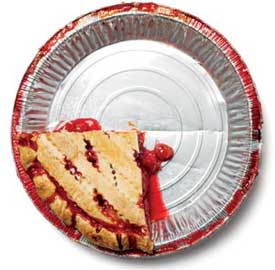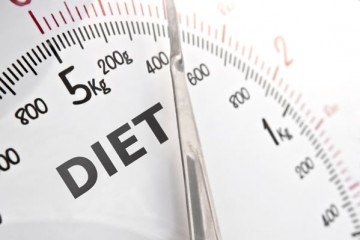4 Ways to Reduce Calories to Lose Weight
 Dieters have an inclination to reduce caloric intake far too much during the initial stages. Their high levels of motivation and an fervent aspiration to lose weight quickly often drives the desire to cut out too many meals almost instantly. Cutting back food intake dramatically may sound like the right idea to lose weight fast and indeed many experience a rapid drop in weight, just not a predominance of fat loss!
Dieters have an inclination to reduce caloric intake far too much during the initial stages. Their high levels of motivation and an fervent aspiration to lose weight quickly often drives the desire to cut out too many meals almost instantly. Cutting back food intake dramatically may sound like the right idea to lose weight fast and indeed many experience a rapid drop in weight, just not a predominance of fat loss!
There are 3500 calories in 1 pound (0.45kg) of fat. Thus, you need to burn 500/ 1000 calories more than you consume each day to lose 1/ 2lbs. of fat per week.
To lose fat, you need to create a calorie deficit (i.e. eat less than you burn), however you also want to avoid the body going into a starvation response. Therefore, to effectively lose body fat, one must outmaneuver the bodies natural fat storage system. The dietary strategies to do this, are as follows:
- Reduce calories by only a small amount
- Small and frequent meals – every three hours
- Follow a “cyclical” or “zigzag” calorie rotation
- Calorie Tapering
1. TIPS TO REDUCE CALORIES
- Determine your daily calorie requirement first using the calorie calculator.
- You can use the weight loss calculator to determine the time and calorie deficit required to reach your target weight.
- For optimal weight loss reduce your calories to 15 – 20% below maintenance. If you do not make progress you can increase this later, although this is not ideal, as the larger the deficit produced, the quicker your body will catch on. Therefore, in such cases the first step should be to increase activity levels.
- Reduce by at least 500 calories, but no more than 1000.
- Do not go below 1200 calories a day for women and 1800 for men or 1000 calories below maintenance level – whichever is higher.
- If you wish to create a larger calorie deficit, do it through exercise – cardio to burn calories, resistance training to maintain muscle muscle mass.
2. “CYCLICAL” or “ZIGZAG” CALORIE ROTATION
Basically this system works by simply reducing your calorie intake over 3 days followed by one day where you eat a little more, i.e. you have 3 low calorie days and one day where you increase you calories to maintenance level (TDEE). This 3-day,1-day cycle then continues. You can use the calorie calculator to get a 7 day zig-zag calorie plan.
This system of calorie rotation can be enormously successful at maintaining muscle, whilst losing body fat. It also avoids the problem of the body adapting to your lower calorie intake and slowing down your metabolism to the point where you will not see any more results. Your body will eventually catch on to a calorie deficit, even if it is 20%. However, your body will catch on faster the larger the calorie deficit. Since this metabolic slowdown is the reason you have a difficult time of reaching your weight/ fat loss target because you have reached a weight loss plateau, it is only logical to avoid metabolic slowdown by not staying on low calories for long periods of time!
An example of a cyclical rotation:
Low calorie days (15 – 20% below TDEE): 1673 calories – 3 days
High calorie day (TDEE/ Maintenance level): 2091 calories – 1 day
3. SMALL & FREQUENT MEALS: EAT EVERY 3 HOURS
Have you ever noticed that skinny people tend to eat little and often, while others skip meals. People who have problems losing weight, often eat little during the day and by the evening are so hungry they will eat anything. There are two problems here. First eating late, which means that the food is more likely to e stored as fat and the quality (or lack of it) and quantity of the food eaten. Although eating this frequently may not be easy at first, it helps to lose fat steadily and avoids weight loss plateaus. (Click here: small meals for weight loss).
- It takes about 3 hours to digest a meal – hence 5 meals/ day
- Frequent eating helps control craving-induced binging, which is what tends to happen after going many hours without eating. You’re so hungry, you want food, any kind of food. This is when it all goes wrong!
- Avoids the excess calories eaten during large meals, which the body, unable to utilize, stores as fat. Small meals eaten more often will reduce fat storage.
- Leaves you feeling satisfied and hunger free
- Your energy levels will not crash.
- Eat every three hours and your body has to work, speeding up your metabolism. Missed meals slows metabolism down.
- Stabilizes blood sugar and insulin levels, which in turn help control appetite.
To determine how many calories each meal should consist of, divide your daily caloric intake by 5, which is the number of meals/ snacks you should be having a day.
For example:Low calorie day = 1673 calories
Number of meals/ day = 5
Average calorie intake per meal = 330 calories
It may not always be possible to eat a complete meal every 3 – 4 hours and instead you will have a snack. Therefore, it is unlikely that the calories of each meal and snack will be identical, but this gives you a ball park figure of how much you should be eating.
4. CALORIE TAPERING
Breakfast may be slightly larger than the other meals and the last snack before bed should be the smallest. The reason you should enjoy a smaller meal before bed is because during the night your metabolism is at its slowest, you are less active and therefore burn less calories during this time. You should also have your last meal around 3 hours before bed.
Of course you can play around with the numbers a little to suit yourself. However, all meals should contain protein. Your “snacks” should not be carbohydrate based such potato chips.
-
Best Bets for Weight Loss in 2009
Weight loss seems to be on everyones min
-
Can You Really Lose Weight Fasting?
Okay so we know that you want to lose we
-
Weight Loss Strategy
Many men are searching for a weight loss
-
Diet Plans For A Fit Body
It has been the dream of all to have a fit body. There are lots of way
-
The Key To Weight Loss The INSIDE OUT Factor The 1 Mindset In Changing Your Weight Forever
WHAT DOES BEING FIT REALLY MEAN?The ?INSIDE-OUT? approach to fitness d
-
Getting rid of your abdominal fat the easy way
Lots of people carry a little bit excess weight around their belly are
- DON'T MISS
- Set your biological clock right
- How To Lose That PostChristmas Bulge And Keep Your New Year Resolutions
- How To Lose Weight With Weight Loss Products and Diet Pills!
- Diet change boosts energy
- HCG Homeopathic Weight Loss Method
- Lose Weight While You Sleep Sure But
- Lose 10lbs Fast.
- Fire Up Your Fat Burning Machine With These 3 Easy Tips
- Weight Loss For Women | Weight Loss Exercise For Women | Fitho.in
- Full Body Detoxweight Loss 1050 Lbs




